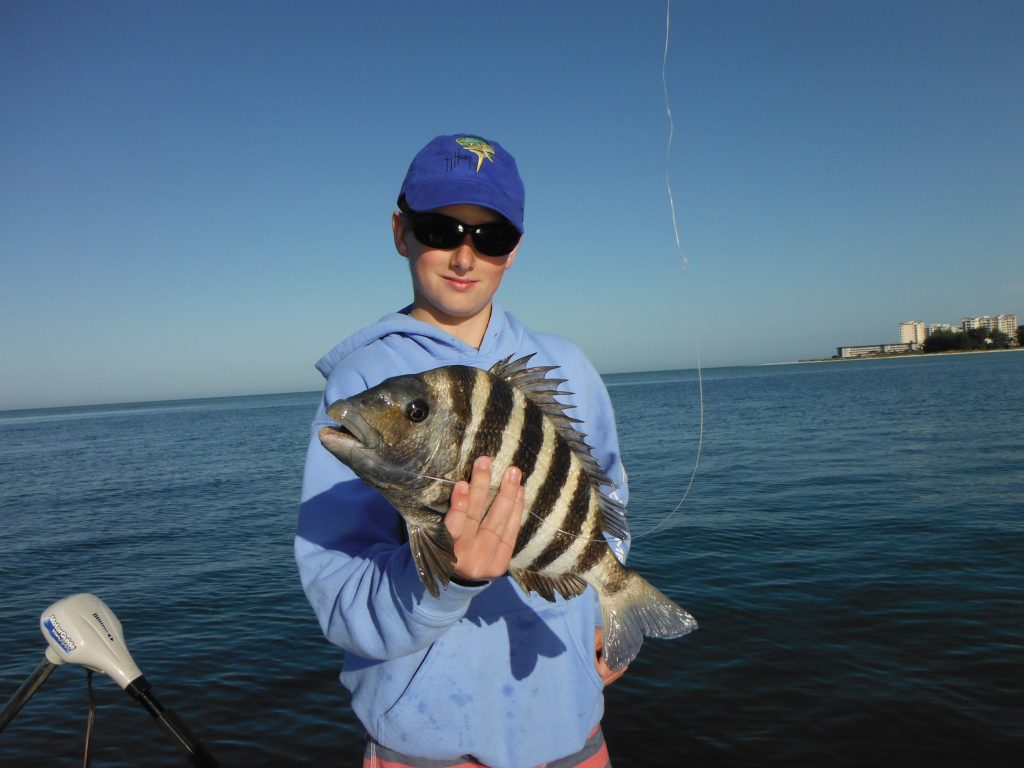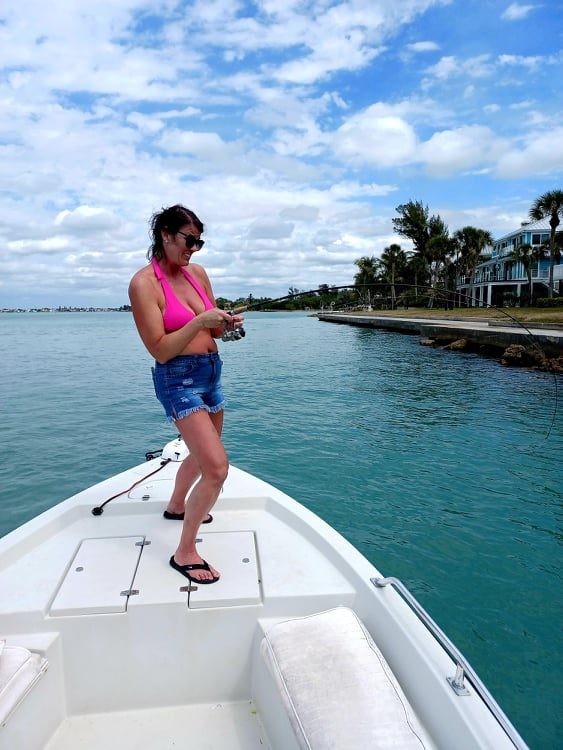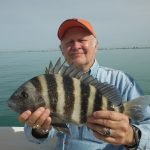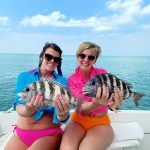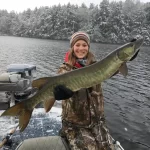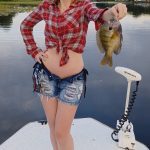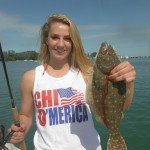Top 15 Sheepshead Fishing Tips – Capt Jim shares
This article lists the top 15 sheepshead fishing tips. Sheepshead are a very popular and tasty bottom fish. They are members of the porgy family. In the United States, they are found all along the coast of the Gulf of Mexico as well as the eastern seaboard up to the mid Atlantic. Sheepshead school up in large numbers. Once located, anglers can put a lot of fish in the boat in a short amount of time. Sheepshead are very good to eat, though they have a large rib cage and are difficult to clean.
The top 15 sheepshead fishing tips are;
-
Live bait is best for sheepshead
-
Sheepshead tackle
-
Terminal tackle for sheepshead
-
Hide the hook when sheepshead fishing
-
Sinker weight is important when sheepshead fishing
-
Sheepshead are structure oriented fish
-
Leader diameter can make a difference
-
Bottom fishing rigs for sheepshead
-
Frozen baits will produce
-
Sheepshead will take other baits
-
Hooking sheephead requires a special technique
-
Tides will affect sheepshead fishing
-
Sheepshead can be found offshore
-
Sheepshead are difficult to clean
-
Sheepshead are terrific to eat
Sheepshead are a structure oriented fish. They are found around bridges, jetties, docks, oyster bars, seawalls, and submerged ledges and rocks. They feed almost exclusively on crustaceans. Very few sheepshead are caught by anglers using artificial lures. Fishing with live, fresh dead, or frozen baits on the bottom near structure produces the most fish. They are a staple of captains running fishing charters throughout the southeast United States.
Sheepshead range all along the Gulf Coast and east coast as far north as Canada. However, the greatest concentration is found from North Carolina south and around to Texas. Cooler months are generally best as this is when they spawn. In the northern parts of their range, sheepshead will school up and spawn in the summer.
1) Live bait is best
As mentioned before, very few sheepshead are caught by anglers using artificial lures. It does occur, but rarely. Some fish just prefer the “real thing”, and sheepshead are one of those species. Live bait, freshly dead, and frozen baits account for the vast majority of sheepshead that are landed by anglers. Live and frozen shrimp are the most readily available and thus popular sheepshead baits.
In most angling situations, live bait is the best choice. Preferred baits vary by region. Shrimp, mole crabs (commonly known as sand fleas), and fiddler crabs are the top baits. Live shrimp are the most universally used bait for sheepshead. They are available at just about every coastal bait shop. Some serious sheepshead anglers prefer fiddler crabs and sand fleas over shrimp. However, in most instances these baits must be procured by the angler. Oyster crabs and worms are caught by anglers looking around rocks on a low tide.
2) Sheepshead fishing tackle
Fortunately, no special tackle is required when targeting sheepshead. The same inshore fishing tackle used for speckled trout and redfish will work fine when bottom fishing for sheepshead. A 7 foot medium action spinning rod match with a 2500-3000 series reel is perfect. Many anglers prefer braided line and its increased sensitivity as sheepshead will often times bite very lightly. Anglers targeting very large sheepshead around heavy structure may need to bump up the tackle and use light conventional gear. The Daiwa Black Gold/St Croix Triumph rod and reel is a very good choice for anglers targeting chasing sheepshead and most all other inshore species and is the outfit that Capt Jim uses on his charters.
Anglers can shop at Amazon for a Daiwa Black Gold reel and St Croix Triumph 7′ MF rod spinning combo in this link.
“Fishing Lido Key is a participant in the Amazon Services LLC Associates Program, an affiliate advertising program designed to provide a means for sites to earn advertising fees by advertising and linking to Amazon. As an Amazon Associate I earn from qualifying purchases.”
In many instances, vertical presentations work best. This means that no casting is required. This makes sheepshead fishing a great option for anglers with less experience. Slightly heavier tackle can be used in these instances.
3) Terminal tackle for sheepshead
Basic bottom fishing tackle is all that is required for anglers sheepshead fishing. A selection of egg sinkers and bank sinkers from one quarter ounce to 2 ounces, split shot, live bait hooks in several sizes, swivels, and several spools of leader material between 20 pound and 40 pound test are all that is required.
Check out the best inshore saltwater fishing tackle
Every angler has his or her favorite hooks for bottom fishing. Circle hooks work well for patient anglers who can resist the urge to set the hook. Live bait hooks work well, too. Whichever hook style used, anglers should make sure that the hook is stout. They are required to turn a nice fish in cover as well as being easier to remove from the sheepshead’s mouth.
4) Hide the hook
Sheepshead can be very fussy at times. For most fishing applications, a #1 or #1/0 short shank live bait hook works best. Some anglers prefer circle hooks as well; a #3/0 circle hook is a good all round size. In either case, anglers should try to hide the hook in the bait as much is possible. This is easy with shrimp as it can be threaded onto the shank. Anglers using sand fleas and fiddlers should hide as much of the hook in the bait as possible.
5) Fishing sinker weight is important
As in most fishing situations, the rule of thumb when bottom fishing is to use the least amount of weight needed to get the bait to the bottom. This results in a more natural presentation as the bait slowly sink through the water column that settles on the bottom. Anglers fishing shallow water with little current will do fine with just a split shot or two. Anglers fishing in passes and inlets with a lot of current will need several ounces.
Sliding egg sinkers are the most popular sinker used by anglers sheepshead fishing. They allow line to slide through as the fish moves off with the bait, feeling no resistance. They can also be used in the chicken rig or “high-low” rigs. Bank sinkers do work well for anglers that drift and fish in heavier currents.
6) Sheepshead are structure oriented
Sheephead will rarely be found very far from some type of structure or cover. Seldom are they encountered in open water or grass flats. Bridges are well-known to produce plenty of fish. Docks can also be extremely productive. Other productive structure would include oyster bars, submerged rocks and ledges, jetties, and artificial reefs.
Current also plays a role in fish position on the structure. Generally speaking, fish will face into the current as they feed. This is true whether stationary or moving around. Often times, sheepshead will form schools and move about as a bunch in search of food. Anglers should not stay at a spot too long if no action is found. This is especially true when fishing docks. Ten docks may provide very little then the eleventh one will be loaded with fish!
7) Leader diameter can make a difference
Though not really thought of as leader shy, there are times were anglers will need to go to a lighter leader. This is particularly true in clear water which often occurs in the cooler months. 30 pound test fluorocarbon leader’s work well in most instances. However, if the bite is slow, dropping down to 20 pound test may result in more action. Conversely, if the wind blows and churns up the water, anglers fishing heavy structure can bump it up to 40 lb or 50 lb leader.
8) Sheepshead bottom fishing rigs
There are several bottom rigs that work well when sheepshead fishing. The sliding sinker rig, also known as a Carolina rig, is probably the most popular. It consists of an egg sinker with a hole in it which the running line goes through. A swivel is then tied on, followed by a 2 foot piece of leader and the hook. This rig allows the sheepshead to pick up the bait and move off with it without feeling any resistance.
A knocker rig is a variation of the sliding sinker rig. The difference is that the leader goes through the sinker below the swivel. This allows the way to sit right on the eye of the hook. There are two advantages to this rig. One, it results in the bait being right on the bottom with the weight. Secondly, the weight at the eye often results in anglers freeing the hook from underwater snags more easily.
Another popular ineffective sheepshead bottom fishing rig is the high low rig or chicken rig. Many anglers are familiar with this setup. The sinker, usually a bank sinker, is tied to the bottom of the leader. A hook or multiple hooks is tied at various levels above the sinker. This allows anglers to fish multiple baits at various points in the water column. It is an excellent presentation went fishing vertically. This is also a great choice when drifting a likely sheepshead fishing spot.
9) Frozen baits will produce when sheepshead fishing
Fortunately for anglers, there are times when sheepshead are not all that fussy. Also, there will be times when shrimp boats can’t get out and live bait become scarce. While live bait is often preferred, frozen shrimp, sand fleas, and fiddler crabs will produce sheepshead. It is important to thaw a little bait at a time as anglers fish. Bait that is completely frozen will often break. Conversely, bait that is thawed out too long can get soft and fall off the hook easily.
10) Other sheepshead baits
While fiddlers, shrimp, and sand fleas are the three most popular sheepshead fishing baits, there are other baits that will produce. Some areas have oyster crabs. These are found around rocks and jetties on a low tide. They resemble stone crabs to a degree. However, they do have a different color. Mollusks such as oysters and clam strips can also be used.
11) Sheepshead hooking techniques
It is often said by veteran sheepshead anglers to “set the hook just before they bite”! Of course, this is an exaggeration. However, Sheepshead are notorious for being very light biters. They will often remove the bait from the hook while the angler feels nothing at all. That said, there are some techniques which will help anglers improve their percentage converting bites to fish. Just keep in mind that this will be lower when targeting sheepshead that it will be when targeting other species.
The best approach is to cast the bait out or lower to the bottom and allow it to settle. The angler should then remove all slack from the line and keep the bait motionless with the rod tip low. The bite often begins with a few subtle “taps”. It is very important not to move the bait at all while this occurs.
At some point, the sheepshead will move off with it and the angler will watch the rod bend. At this point the angler should real quickly while slowly raising the rod. It is important to not try to set the hook. As a charter boat captain in Florida, I have found that this is the best technique for hooking and landing sheepshead.
12) Tide considerations when sheepshead fishing
As in most saltwater fishing applications, tide is a crucial element. Current flow will often times position fish on structure. The best approach is to anchor up tide from the structure that is to be fished. The angler can then present the bait back with the current. This results in a natural presentation. It also lets the sent continue down current, hopefully pulling other fish off of the structure.
Passes and inlets are great spots to catch sheepshead. Here on the West Coast of Florida, they school up in huge numbers and structure in the passes to spawn. However, it can be very difficult to fish the passes and inlets when there is a strong current flow. Anchoring is difficult and a lot of weight will be required to get the bait to the bottom. Finally, there is the safety factor as these can be busy boating spots, particularly on the weekends. The best times to fish the passes are on the changes of the tide, as this is when the current eases up enough to fish and anchor more easily.
13) Fishing for sheepshead offshore
While Sheepshead are plentiful in the inshore waters, angler should not neglect ledges, wrecks, and artificial reefs. Most coastal areas have this type of structure, often close to shore. These can be sheepshead hot spots in the late winter and spring.
Many anglers overlook offshore natural ledges when targeting sheepshead. This is a mistake! While larger artificial reefs attract many sheepshead as well as anglers, ledges will hold some very nice fish. They also get less fishing pressure due to the fact that they are smaller and more difficult to locate. Another benefit is that other desirable species such as snapper, sea bass, and flounder are commonly caught on these smaller ledges.
14) Sheepshead cleaning tips
While sheepshead are fantastic eating, they are difficult to clean. They have very sharp dorsal fins and large, thick rib cages. I have found that the best fish to keep for dinner are the nice fat, chunky fish between 14 inches long and 18 inches long. It is just my preference, but I generally release the larger specimens. Most of these are females that are full of eggs at the time of year that we target sheepshead.
The best way to clean sheepshead is to insert the tip of the fillet knife between the dorsal fin in the back of the fish. Anglers will find a little “flap” here that facilitates this process. Then, the knife is worked down the backbone in both directions. The tip of the knife can be pushed all the way through emerging from the bottom of the fish. In order to save the blade of the knife, the fillet can be ripped off of the rib cage by hand once at that point.
15) Cooking sheepshead
Sheepshead are a very versatile fish. Once cooked, the meat is firm and white. It is a great fish for chowder! It also does very well fried, grilled, baked, and broiled. Blackened sheepshead is delicious and very easy to prepare. There really is no wrong way to prepare these tasty bottom dwellers, as long as they are not overcooked. Florida anglers can find current sheepshead regulations on the FWC website. They do change occasionally.
In conclusion, this article listing the top 15 sheepshead fishing tips will help anglers catch more of these tasty and hard fighting bottom fish. What is your favorite sheepshead bait?
